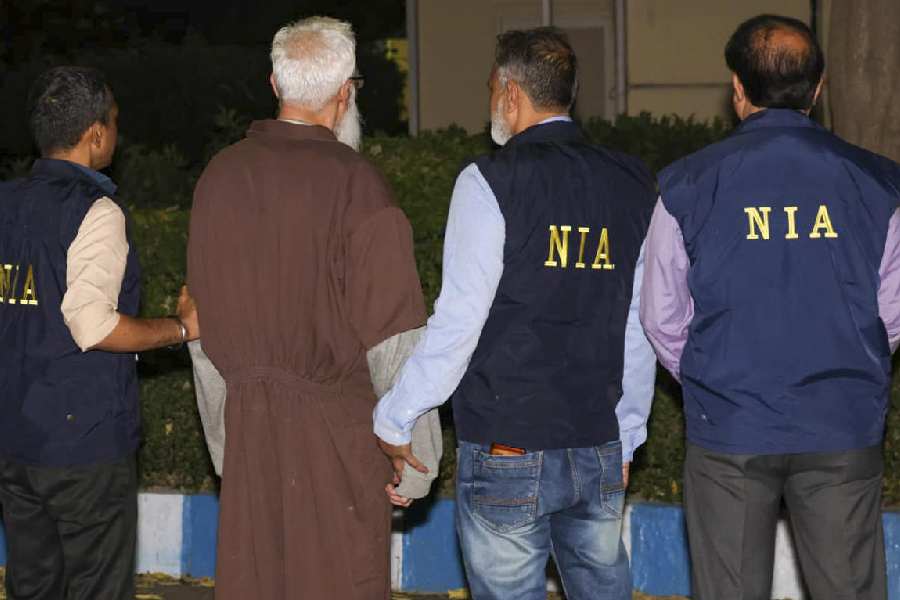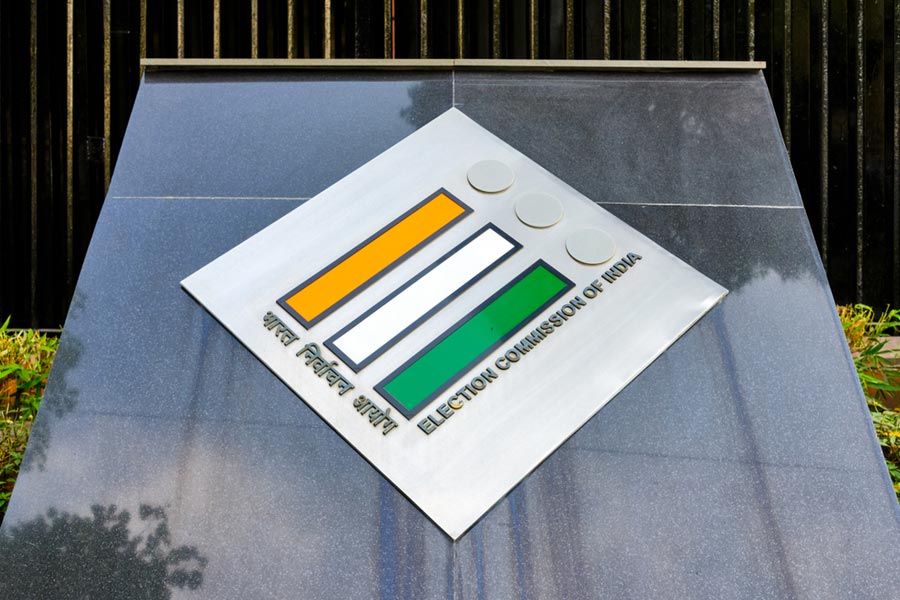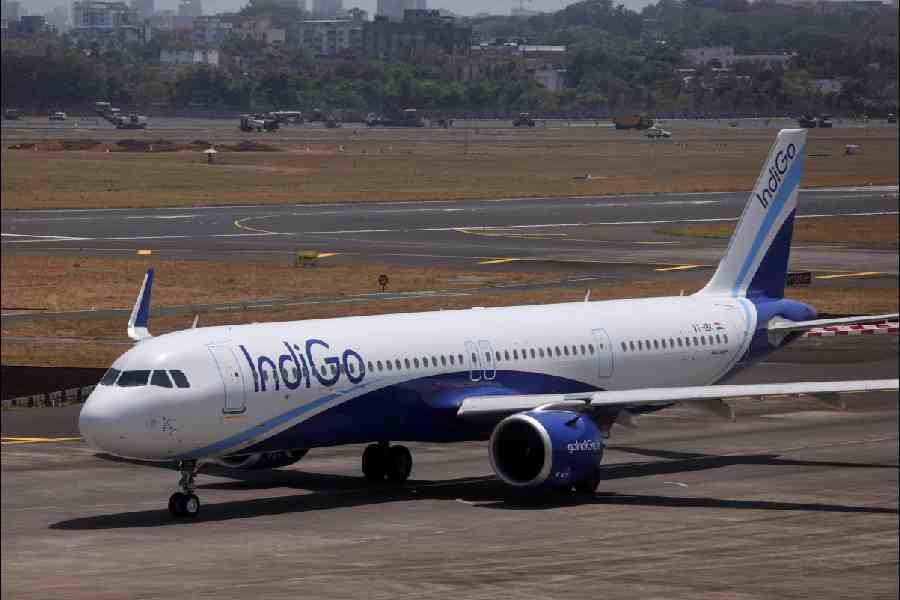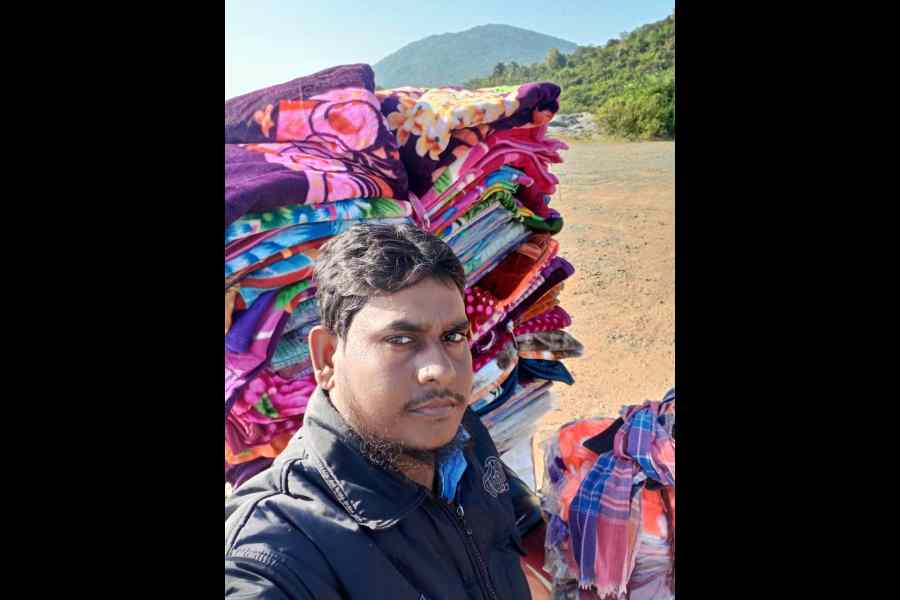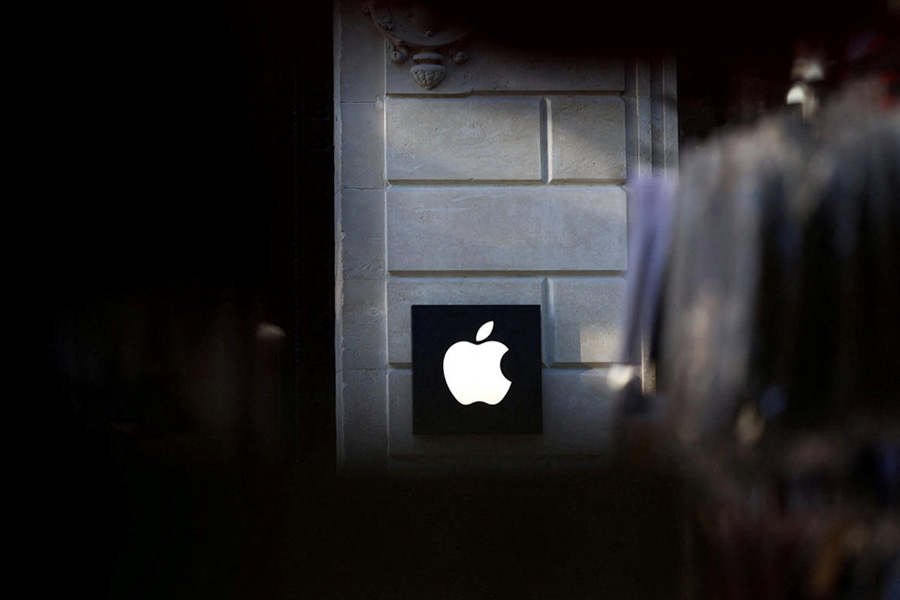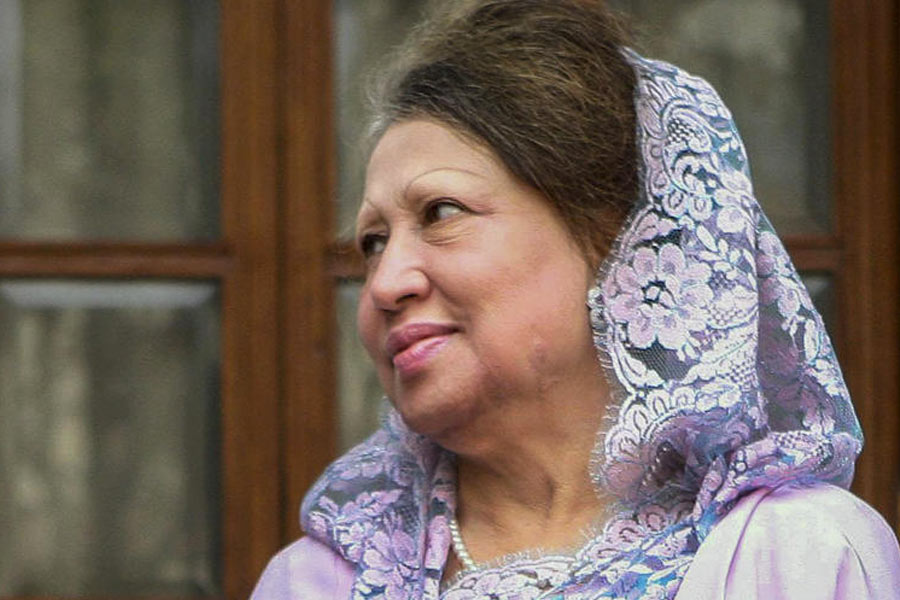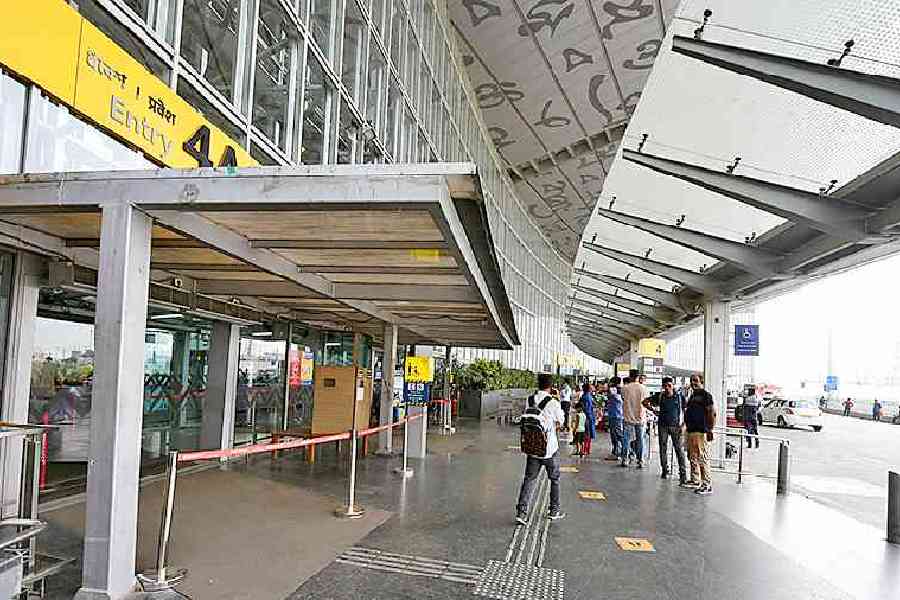Tahawwur Rana’s moment of arrival in India was shrouded in secrecy, the time and place of touchdown kept under wraps.
Eventually, the plane carrying the 64-year-old, accused of helping plot the 2008 Mumbai attacks and extradited from the US, arrived at the Indira Gandhi International Airport, the National Investigation Agency’s (NIA) media statement said. Sources said the time was 6.25pm.
The lone picture released officially showed a man with white hair and a white beard from behind, his arms gripped firmly by two NIA officials.
Rana’s extradition — after a legal and diplomatic battle drawn out for a decade and a half — marks a milestone in the 17-year-old investigation into the worst terror attack on Indian soil. The 60-hour rampage by 10 Pakistani gunmen across Mumbai’s landmarks had killed at least 166 people and brought the two countries to the brink of war.
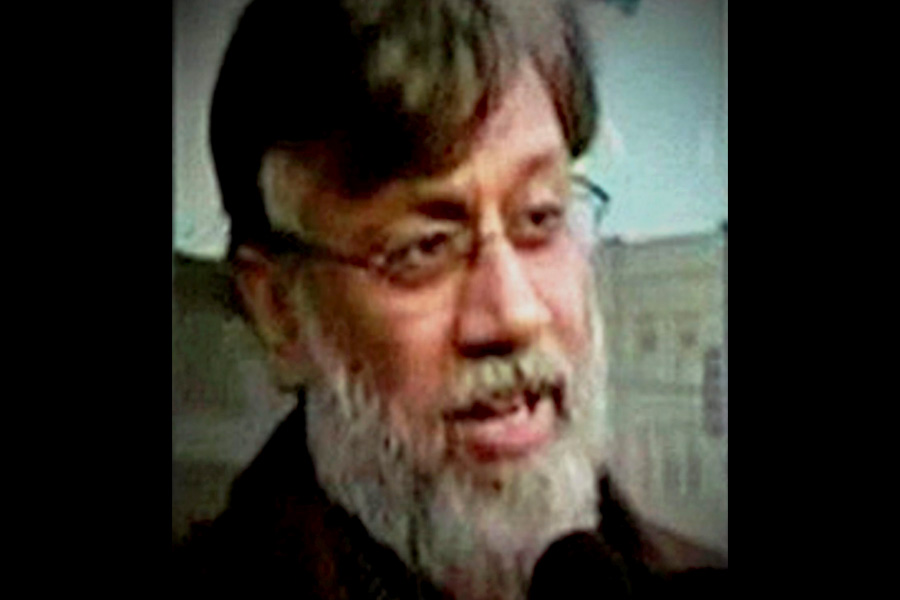
Tahawwur Rana PTI file image
Investigators believe that Rana’s interrogation can provide fresh leads about Pakistan’s role in the attack, clarity on how it was planned and funded, and information on Rana’s associates in India and abroad.
“His questioning is expected to yield critical information about the operational links between the (terrorist group) Lashkar-e-Toiba and elements within Pakistan’s security establishment,” an NIA source said.
“He will be interrogated by a multi-agency team. It will be a challenging task; cracking him will not be easy.”
A convoy of bulletproof vehicles, protected by armed commandos, brought Rana to the NIA headquarters, where an interrogation cell had been set up.
Rana was produced before an NIA court on Thursday night. The agency sought 20 days’ custody for interrogation. The court reserved its verdict.
Sources said Rana would face trial for offences such as criminal conspiracy, waging war against the Government of India, forgery and murder.
As part of the extradition treaty, India has reportedly given the US an assurance that Rana would not be tortured. He would be provided adequate protection in prison and tried only for the offences for which he has been extradited.
An NIA official said Rana’s court proceedings would be conducted in camera, away from the public eye. Delhi district judge Vimal Kumar Yadav on Wednesday received the trial records of the 26/11 case from Mumbai.
Union home minister Amit Shah, national security adviser Ajit Doval and external affairs minister S. Jaishankar had met on Wednesday night to finalise Rana’s security and interrogation plans.
An NIA statement said the extradition “came through after Rana exhausted all legal avenues” to block the move.
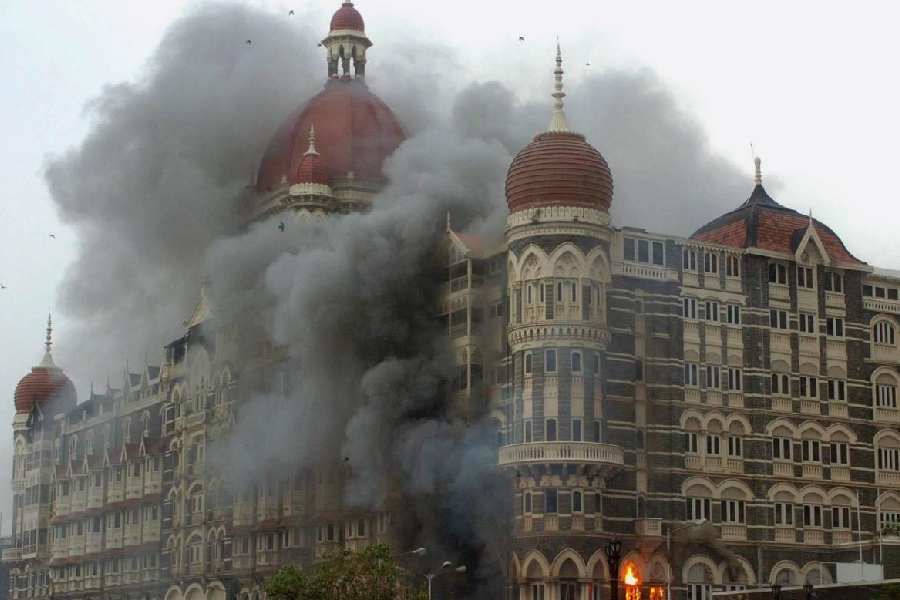
Taj Mahal Hotel during the 26/11 terror attack
“He is accused of conspiring with (US citizen) David Coleman Headley alias Daood Gilani, and operatives of designated terrorist organisations Lashkar-e-Taiba (LeT) and Harkat-ul-Jihadi Islami (HUJI) along with other Pakistan-based co-conspirators, to carry out the devastating terror attacks in Mumbai in 2008,” the statement said.
Headley, who did the reconnaissance for the November 2008 attacks, has said Rana arranged and provided logistical support for his five visits to India between 2006 and 2008.
Sources said Rana, a former Pakistan army doctor who became a naturalised Canadian citizen, himselfhad visited Mumbai with his wife and stayed at the Taj Hotel, one of the targets ofthe attacks.
US investigative agency FBI had arrested Rana from Chicago in October 2009 for providing support to an aborted plan to behead employees of a newspaper in Copenhagen, Denmark, and providing material support to the Lashkar, which orchestrated the Mumbai attacks. Rana was, however, acquitted by a US court in the 26/11 case.
Sources said that investigations had uncovered the roles played in the 26/11 attacks by senior Lashkar and Harkat operatives such as Hafiz Muhammad Saeed alias Tayyaji, Zaki-ur-Rehman Lakhvi, Sajjid Majid alias Wasi, Illyas Kashmiri, and Abdur Rehman Hashim Syed alias Major Abdurrehman alias Pasha.
“They worked in active connivance with officials from Pakistan’s spy agency ISI, namely Major Iqbal alias Major Ali and Major Sameer Ali alias Major Samir,” an NIA official said.
The NIA statement said: “Rana was escorted to Delhi by teams of (counter-terrorism force) NSG and NIA, comprising senior officials, on a special plane from Los Angeles, US. The NIA investigation team at the airport arrested Rana soon after he emerged from the airplane, after completing all the necessary legalformalities.”
It said the district court for the Central District of California had ordered Rana’sextradition on May 16, 2023, but he filed multiple litigations in the Ninth Circuit Court of Appeals, all of which were rejected.
He then filed a petition for a writ of certiorari, two habeas petitions, and an emergency application before the US Supreme Court, which too were denied.
The statement acknowledged the help received from the US department of justice and the US Sky Marshal, and said the NIA had worked closely with other Indian agencies, such as the NSG, through the extradition process.
India’s home and external affairs ministries coordinated with US authorities to “take the matter to its successful conclusion”, the statement said.

